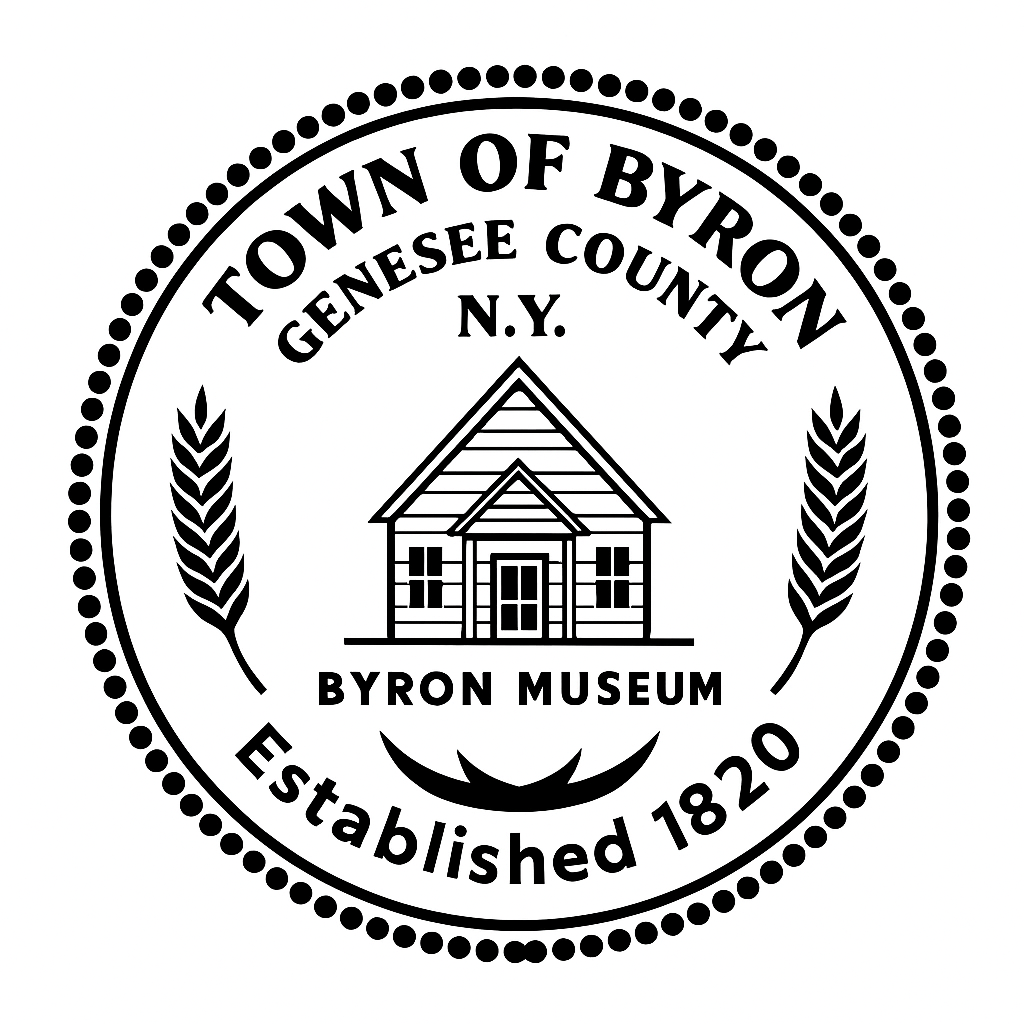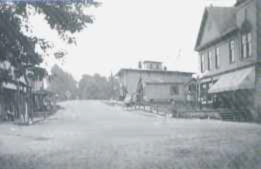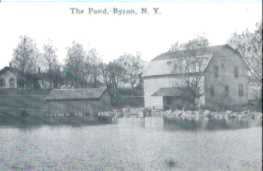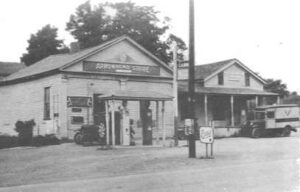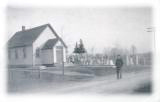- Home
- Historian
Historian
The Town of Byron was officially established on April 4, 1820, when it was divided from the Town of Bergen. It was named in honor of the English poet Lord Byron. In its earliest days, the community was known as Byron Center. Over time, distinct hamlets emerged within the town, each with its own character and history.
South Byron, originally called Brusselville, took its name from early settler Elijah Shumway, who was nicknamed for his “brussel head.” North Byron became known as Pumpkin Hill, inspired by a local hotel and tavern sign shaped and colored like a pumpkin. Early landmarks included Mudd City Pond, the Bennet Mill—one of the town’s first mills—and a bustling main intersection in Byron with the Arrowhead Store, gas station, post office, and general store. Today, that location is home to Crosby’s.
Byron’s history is preserved and celebrated at the Town of Byron Museum, located at 6407 Townline Road next to the Byron Center Cemetery. The museum, housed in the former German Lutheran Church, is open to visitors on Sundays from 2–4 p.m. between Memorial Day and Labor Day, or by appointment. It offers a window into Byron’s rich past, showcasing artifacts, photographs, and stories that reflect the growth and spirit of the community over more than two centuries.
Byron Dig at the Hiscock Archeological Site
The Hiscock Site in Byron is an archeological excavation site where many mastodon and paleo-Indian artifacts have been unearthed. The site is named for the Hiscock family who, in 1959, accidentally dug up a large tusk while using a backhoe to deepen a pond. The site is now owned by the Buffalo Museum of Science and many specimens have been discovered with the help of hundreds of volunteers, since analysis began in 1983. Dr. Richard Laub, Curator of Geology, headed the Byron Dig seen in the link below.
Bob & Beth Wilson
Historians
In accordance with Federal law and the U.S. Department of Agriculture policy, this institution is prohibited from discriminating based on race, color, national origin, religion, sex, gender identity/expression, sexual orientation, disability, age, marital status, family/parental status, income level, or disability. To file a program discrimination complaint, complete the USDA Program Discrimination Complaint Form, AD-3027, found online at How to File a Program Discrimination Complaint and at any USDA office or write a letter addressed to USDA and provide in the letter all of the information requested in the form. To request a copy of the complaint form, call (866) 632-9992. Submit your completed form or letter to USDA by: (1) mail: U.S. Department of Agriculture, Office of the Assistant Secretary for Civil Rights, 1400 Independence Avenue, SW, Washington, D.C. 20250-9410; (2) fax: (202) 690-7442; or (3) email: program.intake@usda.gov.
© Copyright 2025 | Website Design by Seth Graham Computers & Design
